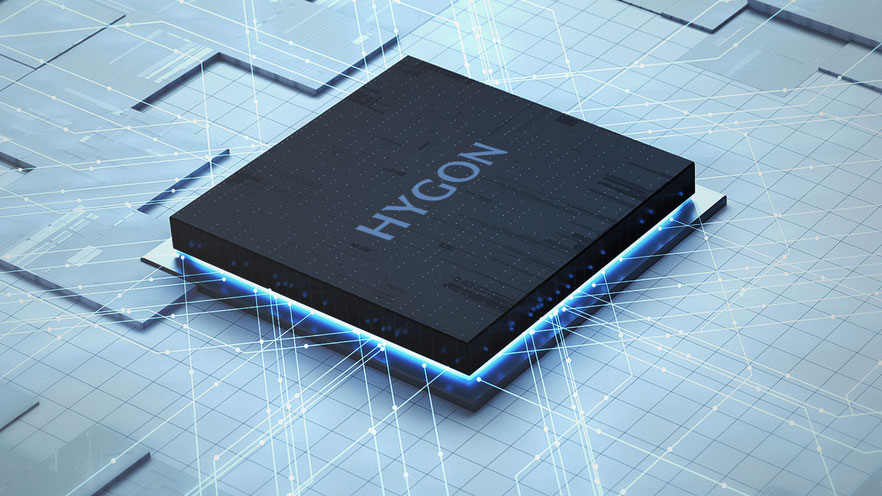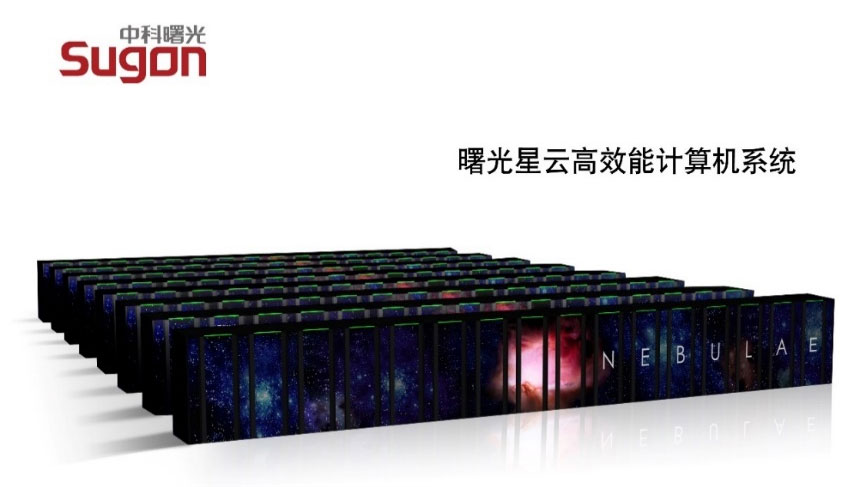China’s Hygon and Sugon merge to form a vertically integrated supercomputing giant as they fend off US sanctions
Hygon’s processor know-how reinforces Sugon’s supercomputer smarts.

A highly significant China tech industry merger looks set to go ahead, reports the South China Morning Post (SCMP). The Hong Kong-based organ says that the merger plan between chip designer Hygon Information Technology and supercomputer maker Sugon marks “a major move to consolidate two of the leading players in China’s computing supply chain.” We may be seeing the forming of a highly impactful vertically integrated supercomputing giant that has blossomed in the shadow of U.S. sanctions.
The proposed deal involves Hygon absorbing Sugon shares in a stock-swap agreement. Should the process complete successfully, with both companies’ shares being taken off the open market for up to 10 trading days, the newly consolidated entity will appear on the Shanghai stock exchange.
To give this merger some context, regular Tom’s Hardware readers will be aware that Hygon chips leverage the AMD Zen processor architecture. However, the firm says it has moved on from those days. In a recent report we published highlighting an extraordinary Hygon C86-5G, a 128-core, 512-thread CPU with AVX-512 and 16-channel DDR5-5600 support, we quoted a company exec asserting it uses a "new self-developed microarchitecture” in its latest designs.

Our previous reports on Sugon made clear its existing close relationship with Hygon. In recent years, the supercomputer maker leaned heavily on Hygon x86 chips to develop high-performance platforms. Sugon is backed by the Chinese Academy of Sciences, explains the SCMP, and has managed to push China into the “global top three for supercomputing,” it is claimed.
The merging partners were both on the U.S. Entity List
Both Hygon and Sugon are on the U.S. Entity List, which means they can’t get direct access to chips from U.S. suppliers such as AMD, Intel, and Nvidia. Naturally, the pairing, in their new clothes, will be treated similarly by U.S. policymakers. However, that will likely be of little concern to the newly formed vertically integrated Chinese supercomputing giant. The U.S. trade measures might have drawn them inexorably together.
Consolidation in the Chinese semiconductor and computing sectors has previously been forecast by analysts. This newly merged company looks like a sure-fire success, with the Chinese political will to build a formidable high-performance computing infrastructure to drive its domestic AI and big data projects.
Follow Tom's Hardware on Google News to get our up-to-date news, analysis, and reviews in your feeds. Make sure to click the Follow button.
Stay On the Cutting Edge: Get the Tom's Hardware Newsletter
Get Tom's Hardware's best news and in-depth reviews, straight to your inbox.

Mark Tyson is a news editor at Tom's Hardware. He enjoys covering the full breadth of PC tech; from business and semiconductor design to products approaching the edge of reason.
-
atomicWAR Nice AMD!! It was such a great idea to license out x86 to Hygon. AMD you are to blame for setting this stage! I hope it doesn't bite western semiconductors in the back side.Reply -
pug_s Hygon's only got Zen1 technology from AMD. I doubt that this newly formed company would improve on that.Reply -
atomicWAR Reply
I wish that were true. They have started with their own custom designs for x86 that deviate from zen (how much is in question) now like the C86-5G as mentioned in the article above and a different TH one I linked. Point being it brings SMT 4 to the table with 128 cores and 512 threads 16 channels of memory and the list goes on. Plus the way an unnamed country has been poaching talent, stealing IP for some time and not to mention adding any head-way they made on their own accord... I wouldn't be so sure. They claim they have 17% IPC increase with the new CPU alone.pug_s said:Hygon's only got Zen1 technology from AMD. I doubt that this newly formed company would improve on that.
When you take their 52% revenue increase over the last year and extrapolate that out a little bit, even without the merger, you may find a company capable of brute forcing their way to better performance using said cash to brain drain eastern/western engineers that might not have considered working there before. If you get enough smart people together I find almost anything is possible.
Regardless I think we are looking at "good enough" performance here in the near term and even that could be problematic for AMD and more so for wounded animals like Intel... who are both already losing business to ARM designs to the likes of Amazon, Apple, etc. -
pug_s Reply
it is true. Hygon got the ip from AMD for Zen1 cpu's but of course they improve on that process without the help from AMD.atomicWAR said:I wish that were true. They have started with their own custom designs for x86 that deviate from zen (how much is in question) now like the C86-5G as mentioned in the article above and a different TH one I linked. Point being it brings SMT 4 to the table with 128 cores and 512 threads 16 channels of memory and the list goes on. Plus the way an unnamed country has been poaching talent, stealing IP for some time and not to mention adding any head-way they made on their own accord... I wouldn't be so sure. They claim they have 17% IPC increase with the new CPU alone.
When you take their 52% revenue increase over the last year and extrapolate that out a little bit, even without the merger, you may find a company capable of brute forcing their way to better performance using said cash to brain drain eastern/western engineers that might not have considered working there before. If you get enough smart people together I find almost anything is possible.
Regardless I think we are looking at "good enough" performance here in the near term and even that could be problematic AMD and more so for wounded animals like Intel... who are already losing business to ARM designs to the likes of Amazon, Apple, etc.